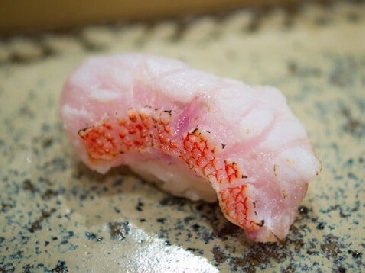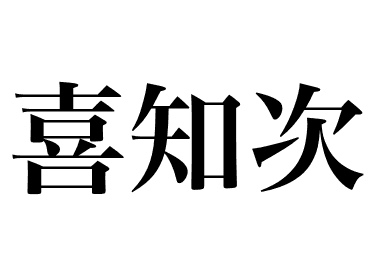White flesh


Broadbanded thornyhead (Kichiji)
【Nigiri sushi: Shiromi】
Kichiji is distributed in the Pacific Ocean off the Pacific coast of Honshu north of Suruga Bay, Hokkaido, and the Kuril Islands, as well as the southwestern part of the Sea of Okhotsk. It is particularly abundant along the Pacific coast of Tohoku and Hokkaido and does not inhabit the Sea of Japan. It measures 30 cm in length and inhabits continental shelf slopes at depths of 150–1,200 meters, feeding on shrimp and small fish.The bright red color of Kichiji is believed to be due to astaxanthin, a pigment found in shrimp. It is considered one of the most delicious red fish, with a delicate, flavorful white flesh that is excellent when served as sashimi. Note that the red color fades and turns orange as the fish spoils.
It is generally known as “kinki.” In the past, it was caught in large quantities and was mainly used as fertilizer or as an ingredient in Sendai's famous “sasa kamaboko” (a type of fish cake). It was also considered a low-grade fish. However, due to a change in preferences toward fatty fish, it has recently gained popularity as a high-quality fish. In addition to its beautiful skin, it has a rich flavor between the skin and flesh, so it is often used in sushi without removing the skin.While it is a staple sushi topping in Hokkaido, it is rarely seen in Tokyo.
【Substitute fish】
Shortspine thornyhead (Arasukakichiji): Sebastolobus alascanus Bean, 1890

